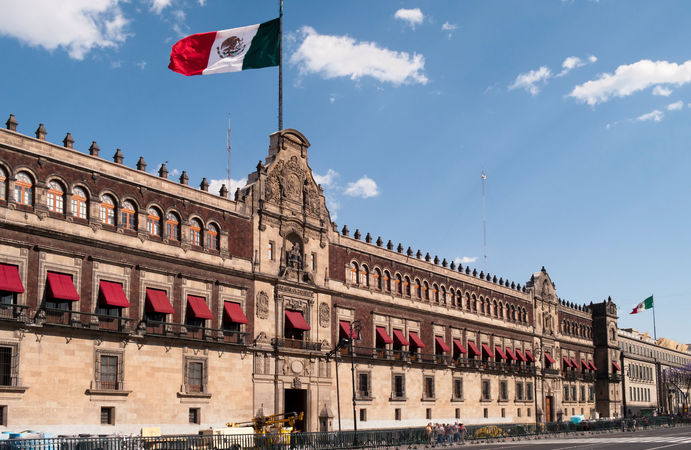We have previously discussed in this space the existence of different rules for determining the origin of a product for the purposes of duty preference vs. the rules for determining country of origin marking for imports into the U.S. from a NAFTA country. The distinction has taken on greater significance in the wake of the Section 301 trade remedy duties imposed on products from China. Can an importer avoid the duties by moving an assembly operation from China to Mexico? If under the NAFTA marking rules a product is determined to be of Mexican origin, will that suffice?
A recent Customs ruling (H300226) should alert importers of the need to verify that their planned strategy will not result in the same negative outcome as that in the ruling[1].
Before we dig into the particulars of the ruling, recall that in general the origin of an imported product not controlled by the rules of origin of a particular free trade agreement is controlled by 19 C.F.R. § 134.1(b), which introduces the concept of “substantial transformation”. It also mentions, however, that “…for a good of a NAFTA country, the NAFTA Marking Rules will determine the country of origin.”
There is no shortage of Court and Customs and Border Protection (CBP) rulings laying out what constitutes a substantial transformation. For starters, in CBP Headquarters Ruling H276411: “A substantial transformation occurs when articles lose their identity and become new articles having a new name, character and use. To determine whether a substantial transformation has occurred, each case must be decided on its own particular facts. Uniroyal, Inc. v. United States, 3 CIT 220, 224, 542 F. Supp. 1026, 1029 (1982), aff’d, 702 F.2d 1022 (Fed. Cir. 1983).” (emphasis added)
The NAFTA marking rules for origin, however, are less subjective and based on the product’s tariff classification in addition to a set of steps applied hierarchically. The complete rules can be found in 19 C.F.R. § 102.11, but in short the country of origin of the good is the country where:
(a)(1) The good is wholly obtained or produced;
(a)(2) The good is produced exclusively from domestic materials; or
(a)(3) Each foreign material incorporated in that good undergoes an applicable change in tariff classification set out in Section 102.20 and satisfies any other applicable requirements of that section, and all other applicable requirements of these rules are satisfied.
A critical point made in H30026 is that when it comes to trade remedy type duty assessments such as anti-dumping, countervailing, and safeguard measures, such as the Section 301 duties on products from China, the substantial transformation analysis is applied and not the Part 102 Marking Rules.
Over time, the Courts have laid out a “name, character and use” test to determine if a substantial transformation has occurred. For ruling H30026, CBP leaned on a case from 2016 – Energizer Battery, Inc. v. United States, 190 F. Supp. 3d 1308. The scenario in Energizer involved the assembly of flashlight components into a flashlight.
“The final assembly and packaging of the Generation II flashlight occurs at two work stations (“Work Station I” and “Work Station II”) at Energizer’s facility in Vermont. At Work Station I, a worker completes assembly of the lens head subassembly (imported from China partially assembled). At Work Station II, a worker assembles the lens head subassembly with the remaining Generation II flashlight components, tests the final product, and places the finished Generation II flashlight in a box. The assembly, testing and boxing of a Generation II flashlight at the Vermont facility takes approximately seven minutes and ten seconds.”
In Energizer, the Court determined that the 1) components retained their name after assembly, 2) the components had a pre-determined end-use, and 3) the assembly process was not sufficiently complex. According to the Court, absent a change in name, character, or end-use, the origin of the assembled flashlight was China and not the US.
In the situation considered in H30026, the proposed operation in Mexico was the assembly of a direct current electric motor consisting of three components: the stator or rear housing, the rotor or armature assembly, and the end cap assembly. All three components are of Chinese origin and would be assembled into the finished good after importation into Mexico. According to CBP, “The foreign subassemblies had a pre-determined end-use and did not undergo a change in use due to the assembly process in Mexico. Based on the information provided, the production process performed in Mexico is mere simple assembly and the foreign subassemblies are not substantially transformed.”
Therefore, even though the importer’s process in Mexico conferred Mexican origin based on the NAFTA marking rules, (a)(3) above, and the product would be labeled with a country of origin of Mexico, the origin would be China for the purposes of assessing Section 301 duties.
If the implementation of Section 301 trade remedies imposed by the current Administration are having a significant impact on an importer’s bottom line to where they are considering the need to shift assembly of Chinese origin components from China to Mexico (or any other country for that matter), they need to verify the relocated assembly operation will stand up to CBP’s case by case view of what constitutes a substantial transformation. The use of outside trade compliance legal counsel and/or the utilization of CBP’s ruling request process would be well advised in these situations.
[1]HQ H300226 Modification of NY N299096; country of origin of electric motors from Mexico; 2018 Section 301 trade remedy; 9903.88.01, HTSUS






